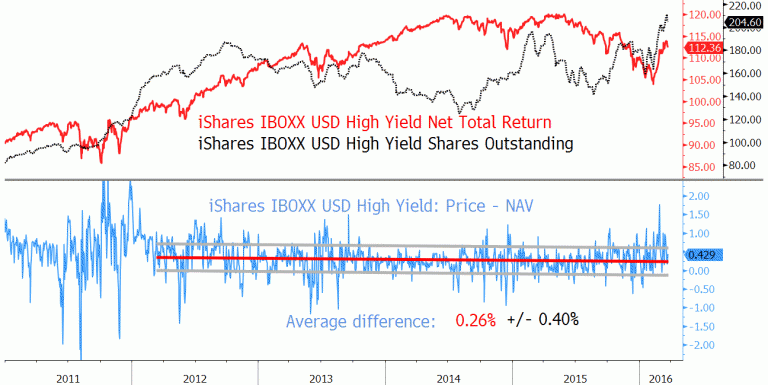Daniel Kahneman, the Nobel Prize in Economic Sciences in 2002, wrote a best-selling book entitled “Thinking, Fast and Slow”. The central thesis of the book is that human beings have two modes of thought: System 1: Fast, instinctive and emotional; System 2: Slow, deliberative and logical. We can say that System 1 resembles the PERCEPTION, whereas, System 2 is closer to the REALITY. Being so fast and so emotional, sometimes the PERCEPTIONS may distort or exaggerate the news delivered by the market, whereas REALITY gives the investor a medium-long term framework to better assess the market situation.
Discover our monthly series “Perception vs. Reality”!
PERCEPTION
The Financial Times published on 10-Dec-15 the following headline and paragraph:
“US regulator highlights ETF and junk debt risks. A US regulator has rebuffed concerns over the health of the US corporate bond market, but highlighted “emerging risks” in exchange traded funds and junk debt”
Many investors, authorities, and other market players have been vocal over their concerns regarding new types of risks stemming from the high growth ETF market, specifically in High Yield (HY) ETFs: “They are passive investments which will invest in liquid and illiquid bonds”; “In a bear market, retail investors will get scared and sell their HY ETF creating liquidity mismatching problems”; “High Yield ETFs will not be able to honored redemptions in a bear market” are typical sentences taken from the financial press in the last 6 months.
Investors have legitimate reasons to be vigilant. These are not the most liquid securities and as we remember too well, during the Great Recession of 2008-09, equity shares dropped 50%, convertible bonds could not be sold and US high yield bonds lost 32% (peak to through), mainly because of the illiquidity of those assets. Fool me twice, shame on me as the saying goes and the argument that strong liquidity risks may originate from the mismatch between instant liquidity promised by HY ETFs and the low liquidity of their underlying assets, is a compelling one.
REALITY
The red line in the top panel of the chart shows the performance (net of dividends) of the largest US HY ETF, iShares IBOXX USD HY which accounted for $15.5Bln as of 29 February‘16 out of the $48.2Bln of the total HY ETF market (1). The black line displays the total shares outstanding.

We can see how quickly investors reacted to bad news and, during the Jan-Feb bear market, redeemed about 11% of their investments in this ETF over 40 days (31 December ‘15 to 12 February‘16). These redemption volumes are more or less in line with what was happening during March-2015 to August-2015 or redemptions from June-2012 to June-2014. This is the first time after the summer of ’11 we’ve witnessed important selling in a falling HY market, the exact situation investors feared the most.
How did ETFs manage redemptions?
One way to measure it indirectly is by looking at the bottom panel that shows, in blue, the difference between the price of the ETF and the NAV. Whereas in the ‘11 bear market, the spread between price and NAV fluctuated often between +1% and -1%, the spreads in ‘12-‘16 have been tighter and moving in a band of -0.14% to 0.66% (-/+ one standard deviation), which we consider as perfectly acceptable. Interesting enough, after 12 February, investors turned around, and fearlessly started to buy shares. In fact today, the ETF has the highest level of assets in its history. With the benefit of several years’ experience, ETF managers have somehow learned how to better manage redemptions (the blue line tells the story).
Why could they handle redemptions “so well” contrary to expectations?
Let’s look at simple figures:
- Total USD High Yield assets (domestic and international issuers): $1.8 tr. (JP Morgan)
- Total USD High Yield assets managed by ETFs: $48.2 bn. (Blackrock)
- Ratio ETFs / Total market: 2.6%
Even though investors may be faster to pull out money from ETFs, it does not seem to be much of an important risk for the market when they account for as little as 2.6% of the total assets.
CONCLUSION
HY ETFs have liquidity mismatches, but these are very similar to the investment funds invested in HY which offer daily liquidity. ETF managers have improved the techniques to handle redemptions vs. what happened in 2011. The relative size of HY ETFs vs industry is very small and needn’t be cause for much concern.
Be that as it may, this piece’s main purpose is to simply play down the risks associated with HY ETFs. When looking exclusively at performance, the largest active US mutual fund managers have done better than their passive counterparts as they avoided the bad components of the index…but this is a point best made another time.
(1) Doing the same analysis with the second largest HY ETF, SPDR Barclays High Yield, with $10.3 bn. assets draws similar conclusions.